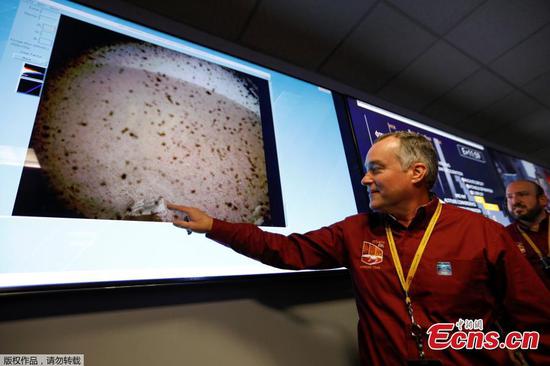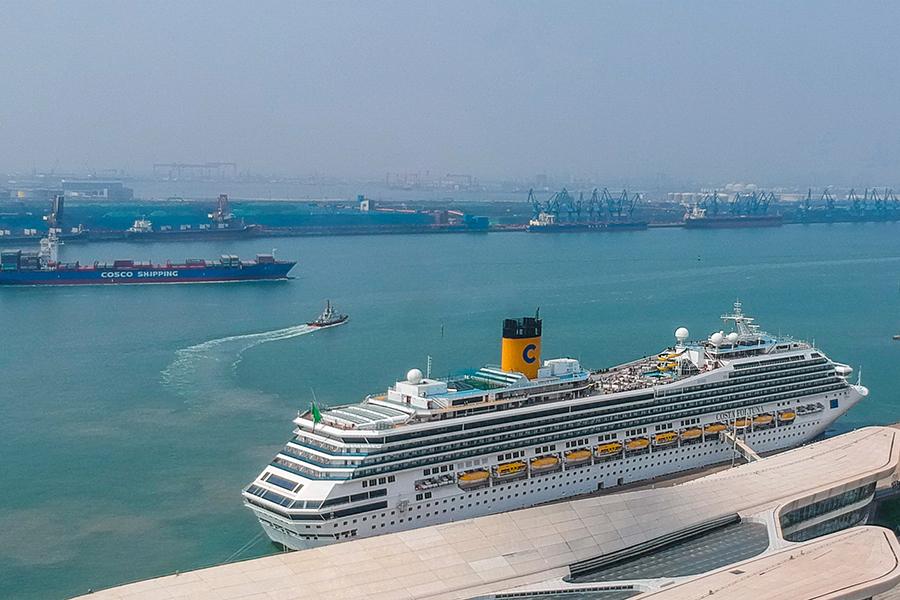
A cruiser docks at the Dongjiang Free Trade Port Zone of the Tianjin Binhai New Area. (Photo provided to China Daily)
Geographical distribution of free trade zones has far-reaching impact on China's economic growth
As China's online shopping frenzy kicked off on Nov. 11, logistics workers braced themselves for the rush.
Luckily, this year, workers in North China's largest e-commerce automated warehouse, in the Dongjiang Free Trade Port Zone of the Tianjin Binhai New Area, have a secret weapon.
"The conveyor delivers the goods one by one to me. I no longer need to climb the ladder," said Pang Hongqiang, a cargo sorter at leading domestic courier company SF Express.
The futuristic warehouse is not only helping to deliver thousands of parcels a day, but also deliver on a dream to bring high-end industry and boosted trade, through the use of free trade zones.
Five years ago, China began to explore the FTZ model as a way to promote trade and investment. It also aims to help streamline an overloaded administrative approval system.
Shanghai was the first, approved by the State Council on Aug 22, 2013, with looser restrictions on foreign businesses, and as a test bed for new government policies.
Since then, pilot FTZs have sprung up across the country. In all, 12 have been built or are planned, appearing in Fujian and Guangdong provinces on the southeastern coast, and the inland provinces of Shaanxi and Sichuan in western China.
The newest example is the entire southern island of Hainan, named this year as the latest and largest pilot FTZ.
Such an expansion is not randomly made or a mere duplication of others. Thoroughly planned and researched, the geographical distribution of these pilot FTZs has a far-reaching impact on the development of the Chinese economy, and each of them has displayed its own advantages.
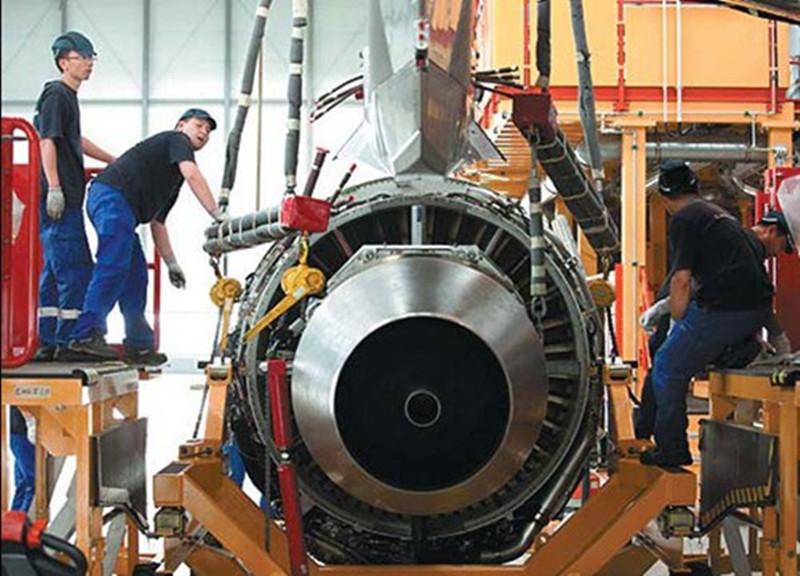
Technicians install an engine for an A320 plane under construction at the final assembly line of the Airbus plant in Tianjin. (Photo/China Daily)
Free port
The China (Tianjin) Pilot Free Trade Zone only began official operation in April 2015, as a way to draw in investment, but authorities are already planning its next phase of development.
The administration revealed to China Daily that it has, following detailed research and discussion, drafted and revised the construction plan of the Beijing-Tianjin-Hebei free port, which would further integrate regional development.
It said the plan will be submitted to the higher authorities "in due course". If it is approved, the blueprint for the free port would serve as a platform for the region to open further to the outside world.
A free port is set up within a country or a region's borders but is outside its customs' supervision. It is open to all commercial vessels on equal terms. Goods may be unloaded, stored and shipped without the payment of customs duties.
A free port needs specially designed policies in terms of market access, financial systems and taxation, said Wei Jianguo, vice-president of the China Center for International Economic Exchanges.
Earlier in 2016, a 10 billion yuan ($1.44 billion) government-backed fund was set up to promote the development and integration of the Beijing-Tianjin-Hebei region.
The Tianjin Pilot FTZ has made significant advances in the past three years. Peng Zhiwei, director of the department of international economics and trade at Nankai University, said the Tianjin FTZ has made several breakthroughs in terms of institutional reform, investment promotion, trade liberalization, and the innovation of financial systems.
Concrete measures have been taken in the zone to facilitate trade and investment, offering a one-stop service to companies. The average customs clearance time has been cut from up to two days to two hours. In addition, customs clearance costs have been slashed by 70 percent, and logistics costs by 30 percent.
The Tianjin FTZ has also begun specializing in car imports through a type of reduced duty called "parallel auto imports". In these, independent auto dealers directly purchase vehicles from a foreign production base or auto dealer. Prices for parallel-import cars are normally 10 to 20 percent lower than the prices offered by authorized dealers.
Since it was launched, the Tianjin FTZ has attracted 2,353 foreign companies, with total registered capital of 433.1 billion yuan. Airbus China, located in the Tianjin Pilot FTZ, signed a framework agreement in January with its Chinese partners to increase local production.
Vice-Minister of Commerce Wang Shouwen said China is gradually shifting from high-speed to high-quality growth, and that there is huge market potential. The country welcomes multinationals to seize growth opportunities in the Chinese market.
Wang made the comments at the 11th International Roundtable of Multinational Leaders. The conference, held earlier this month in Tianjin Binhai New Area, brought together government officials and business leaders to discuss the opportunities and challenges that lie ahead.
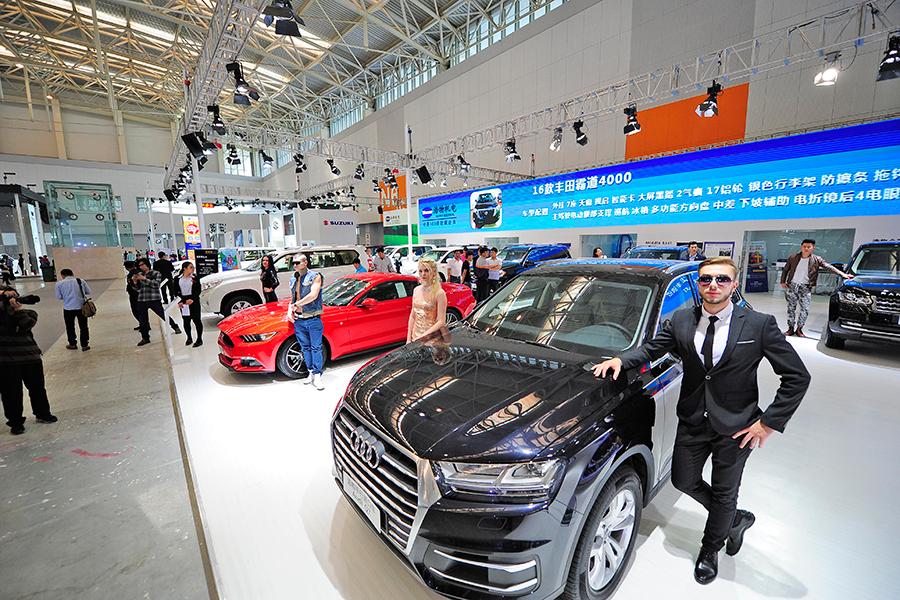
The parallel-import luxury car section at the 2016 China (Tianjin) international automobile exhibition in Tianjin. (Photo provided to China Daily)
Different focuses
Individuality is key, with each area drawing from its location to uniquely specialize in industries that fit it best.
Shanghai, for example, is continuing its path to becoming one of the world's leading financial centers, spearheaded by experiments in the city's FTZ.
By November, 41 renowned international financial institutions had set up 56 asset management companies in the Lujiazui Financial City area of the Shanghai Pilot FTZ.
Meanwhile, just a few kilometers away, the Zhejiang Pilot FTZ is going a wholly different route and is instead focusing on China's oil and gas industries.
"The FTZ has been pushing forward the construction of an international oil base in the zone, and the first phase of it, with 20 million metric tons of refining capacity, will start testing by the end of this year," said Xia Wenzhong, deputy head of Zhejiang Pilot FTZ.
"Currently the storage capacity has reached 22.7 million cubic meters, one of the biggest of its kind in the country, and we plan to increase it to 40 million cubic meters by 2020."
In all, the Zhejiang FTZ is expecting to handle 20 million tons of oil products this year, worth in excess of 80 billion yuan. By 2020, the figure is expected to rise to 300 billion yuan.
Unlike the earlier reforms, which were largely centered on the eastern coast, this new round of reform is including inland provinces.
In 2017, five inland provincial regions, all major transportation hubs in the framework of the Belt and Road Initiative, signed up in an effort to promote the country's undeveloped interior regions and facilitate the B&R Initiative.
In the Chongqing FTZ, an international logistics system has been formed, connecting the city with the Pacific in the east, Europe in the west, the Association of Southeast Asian Nations in the south and Russia in the north.
Northwestern China's Shaanxi Pilot FTZ is devoted to developing modern agriculture. It has China's first high-tech agricultural industry demonstration zone in Yangling. The area led the research and development of agricultural technologies in arid and semi-arid regions in China and cooperated with countries in similar climate conditions along the Belt and Road.
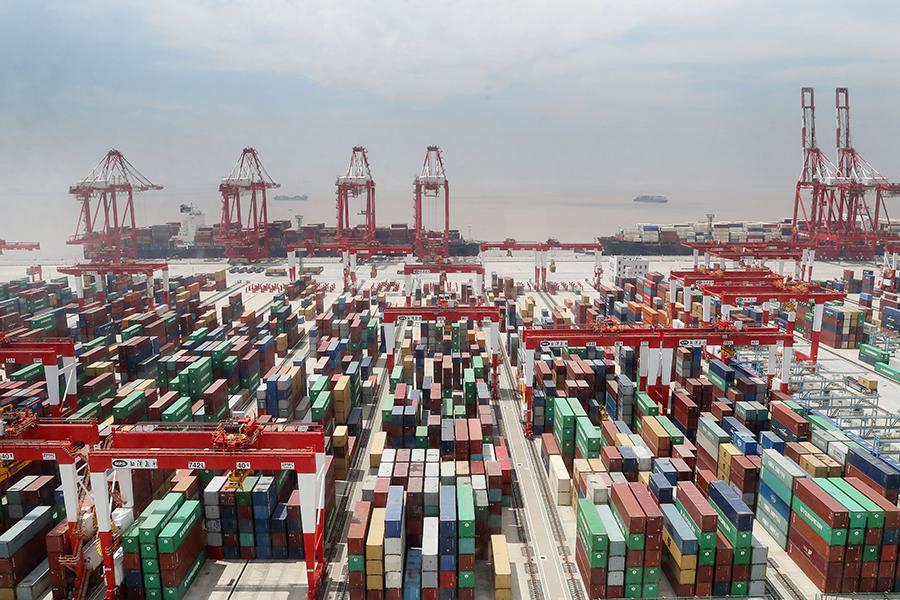
Cargo containers pack the Yangshan port in the Shanghai Pilot Free Trade Zone on May 17. (Photo/Xinhua)
New mission
About 40 years ago, China established special economic zones, which served as windows and testing grounds when the authorities decided to open the domestic market and modernize the country's economy.
Foreign investment flowed in, new regulations were issued and new technologies were tested first in these areas-later spreading to other parts of the country, contributing to the fast growth of China's economy over the years.
Observers see the establishment of pilot FTZs as a new move for China to push ahead reform and opening-up in a new domestic and external environment.
Compared with special economic zones, pilot FTZs aim to achieve mutual benefit and enable the country to participate in global economic cooperation and competition at a higher level, Luo Qinghe, a professor with Shenzhen University, wrote in a research paper.
A raft of measures have been taken for pilot FTZs to create a more investor-friendly business environment in support of fair competition.
The negative list for foreign investment, for instance, has been shortened in pilot FTZs to broaden market access. Over the past five years, the negative list has been shortened from 190 to 45 items in the Shanghai Pilot FTZ.
The Liaoning Pilot FTZ, the only pilot FTZ in Northeast China, upgraded the processes for examination and approval in the port of Dalian to facilitate the circulation of goods, with the cost for customs clearance slashed by 10 percent.
"After introducing pilot FTZs, the competition between local governments has gradually shifted from GDP growth to reforms," said Yin Chen, a researcher at Fudan University in Shanghai.
So far, around 123 measures first tested in pilot FTZs have been gradually promoted and adopted nationwide, and more new reform measures will be made, according to the Ministry of Commerce.

Tourists buy goods at a duty-free shop in Sanya, Hainan Province, on Oct. 4. (Photo/China News Service)
China's FTZs (2013-18)-five years of milestones
?Sept. 29, 2013: China establishes its first pilot FTZ in Shanghai, a global financial hub.
?Sept. 30, 2013: China first pilots a "negative list" in the Shanghai FTZ with 190 items on it, allowing foreign investment in all fields apart from those named.
?Nov. 22, 2013: The Shanghai International Energy Exchange is unveiled in the Shanghai FTZ, a key step toward the launch of China's own crude oil futures.
?March 4, 2015: The Shanghai Petroleum and Natural Gas Exchange, a jointly funded platform to prompt oil and gas reform and enhance China's pricing power, is registered within the Shanghai FTZ.
?April 21, 2015: China expands the pilot FTZ practice to three other coastal provincial-level regions: Tianjin, Guangdong and Fujian.
?April 27, 2015: The Shanghai FTZ is enlarged to cover the city's commercial and financial center Lujiazui, and Jinqiao and Zhangjiang districts.
?April 1, 2017: New pilot FTZs are launched in Liaoning, Zhejiang, Henan, Hubei, Sichuan and Shaanxi provinces as well as the Chongqing municipality.
?March 26, 2018: China launches the trading of yuan-denominated crude oil futures on the Shanghai International Energy Exchange in the Shanghai FTZ, the first futures variety on the Chinese mainland open to overseas investment.
?June 30, 2018: China unveils a new negative list for foreign investment in the pilot FTZs, with the number of items cut to 45.
?Oct 10, 2018: The Shanghai FTZ issues the country's first negative list in the service trade field.
?Oct 16, 2018: China rolls out a plan for establishing Hainan as a pilot FTZ, the 12th and largest among its peers.
?Oct. 24, 2018: In an instruction on the development of pilot FTZs, President Xi Jinping calls for building the country's pilot FTZs toward new heights of reform and opening-up in the new era.
?Nov. 5, 2018: In a keynote speech at the opening ceremony of the first China International Import Expo in Shanghai, President Xi Jinping reveals the Shanghai FTZ is to expand, announcing: "(We) will encourage and support bold and creative steps by Shanghai to advance investment and trade liberalization and facilitation so that more of its successful practices may be replicated in other parts of China."











